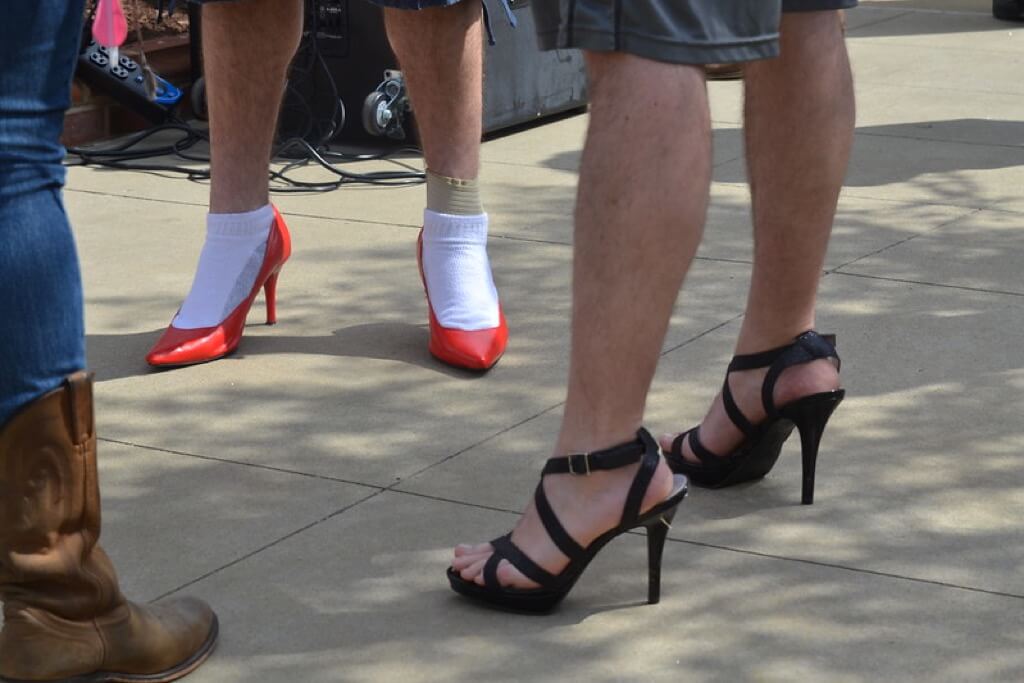Sometimes referred to as a “vagina wig,” the term “merkin” in the Oxford English Dictionary is defined as an artificial covering for the female pubic region. Despite the current trend of meticulous grooming and waxing, the use of merkins has a history dating back at least five centuries, making it far from a modern invention.
While the OED cites the word’s appearance in 1617, in John Taylor’s Three Weekes Observer as “Mistris Minks recover her lost Mirkin,” the Oxford Companion to the Body traces the practice back to the mid-15th century, with the possibility of an even earlier origin.
Originally, Merkins Served a Highly Practical Purpose
Women, particularly those in the profession of prostitution, shaved their pubic hair to combat pubic lice and maintain hygiene. They would then adorn themselves with a wig to cover their bare areas. The advantage of the merkin lay in its easy removal and cleaning, ensuring a hygienic solution.
There’s often speculation that merkins were used to conceal signs of venereal disease. However, the evidence supporting this claim is scarce. The notion that merkins were commonly used to hide syphilis seems highly dubious, considering the visibility of certain symptoms. While the use of merkins for such purposes remains plausible, the lack of documented evidence casts doubt on the prevalence of this practice.
These coverings, made of various soft fabrics or hair, were purportedly crafted from beaver pelts, leading to the modern use of “beaver” as a euphemism for female genitals. However, historical records suggest that merkins were made from human, horse, or goat hair, and the popularity of beaver pelts remains largely unsubstantiated.
The etymology of the term “merkin” itself remains uncertain, with some speculation linking it to the nickname “malkin” for women named “Mary” or “Maud.” However, this remains a speculative connection without concrete evidence.
While tracing the history and application of merkins presents challenges due to the sensitive nature of the topic, it’s evident that they remained popular through the 18th century. Affluent women even adorned their merkins with decorations such as ribbons, jewelry, and flowers.
Today, while merkins are primarily relics of the past, they still find use in certain circles, particularly in the context of film production. Actresses like Kate Winslet have employed merkins to adhere to specific film requirements, showcasing their enduring if niche, utility in contemporary contexts. Beyond their historical significance, merkins continue to offer a unique solution for various modern-day challenges, making them an intriguing artifact in the narrative of human grooming practices.
President Merkin Muffley’s Unforgettable Name
You might recall that the name “Merkin” has made an appearance in the classic film Dr. Strangelove, serving as a quirky reference to the historical context of the merkin.
The Origin of Pasties and Their Role in Modesty
In the 1920s, pasties were introduced as a way to adhere to nudity regulations in performances, gaining popularity through renowned cabarets such as Folies Bergère and Le Lido.
The Arrival of Syphilis in Europe and Its Devastating Effects
The devastating impact of syphilis in Europe, known as the “French Disease” or the “Great Pox,” was characterized by acorn-sized boils that emitted a putrid, dark green substance, sometimes resulting in necrosis extending to the bone.
Advancements in Syphilis Treatment and Recovery
Fortunately, the development of medications like penicillin has significantly improved the outlook for individuals suffering from syphilis, enabling a full recovery in recent times.
The Impact Of The “Merkin” On Todays Times
Preserving Privacy and Historical Accuracy
When considering the historical context of the vaginal wig or merkin, it becomes evident that its use was not merely for cosmetic reasons but also to preserve the privacy and modesty of women in earlier times. Understanding this historical significance can provide you with a nuanced perspective on the cultural practices of the past and how they shaped attitudes toward personal grooming.
Navigating Modern Challenges with Tact and Care
In contemporary settings, the merkin continues to serve a practical purpose, particularly in the realm of film production and adherence to specific rating requirements. For actresses, it can offer a discreet solution for maintaining modesty and authenticity in period pieces or scenes that necessitate a specific aesthetic. Recognizing this dual function can help you appreciate the versatility of the merkin in navigating the demands of modern filmmaking.
Addressing Taboo Topics with Sensitivity and Respect
While discussions surrounding intimate grooming practices and historical artifacts like the merkin may seem unconventional, it is crucial to approach these subjects with sensitivity and respect. By acknowledging the cultural and historical significance of such items, we can foster a more comprehensive understanding of human grooming practices and the evolving perceptions of personal hygiene over time.
Promoting Awareness and Open Dialogue
Engaging in open conversations about the historical context and contemporary relevance of the vaginal wig can foster awareness and understanding, encouraging a more inclusive and informed approach to discussions on intimate topics. Embracing this approach can contribute to a broader cultural dialogue that values historical context and promotes empathy and understanding.
The Merkin’s Resurgence in Modern Fashion
As fashion continually evolves, some designers have drawn inspiration from historical grooming practices, including the revival of the merkin as a statement piece in contemporary fashion shows and artistic performances. This trend has sparked debates about the boundaries between historical homage and modern reinterpretation, highlighting the dynamic interplay between the past and the present in the world of fashion.
Ethical Considerations in the Production of Modern Merkins
With the resurgence of interest in merkins, discussions about the ethical sourcing of materials and sustainable production methods have gained prominence. Debates regarding the use of animal-derived products versus synthetic alternatives have prompted a broader conversation about ethical standards in the production of intimate grooming accessories, emphasizing the importance of responsible and conscious consumer choices.
The Cultural Significance of Grooming Practices in Different Societies
Examining the cultural significance of grooming practices, including the use of merkins, across various societies and historical contexts, sheds light on the diverse perspectives on personal hygiene and beauty standards. Exploring the differences in grooming rituals can foster a deeper understanding of cultural diversity and the role of personal appearance in shaping societal norms and values.
Artistic Expressions and Symbolism in Merkin Design
The artistic representations and symbolic meanings associated with the design and adornment of merkins have sparked intriguing discussions about self-expression and identity. Analyzing the cultural symbolism embedded in the intricate designs and embellishments of merkins unveils a rich tapestry of artistic expression, reflecting individual narratives and societal dynamics.




